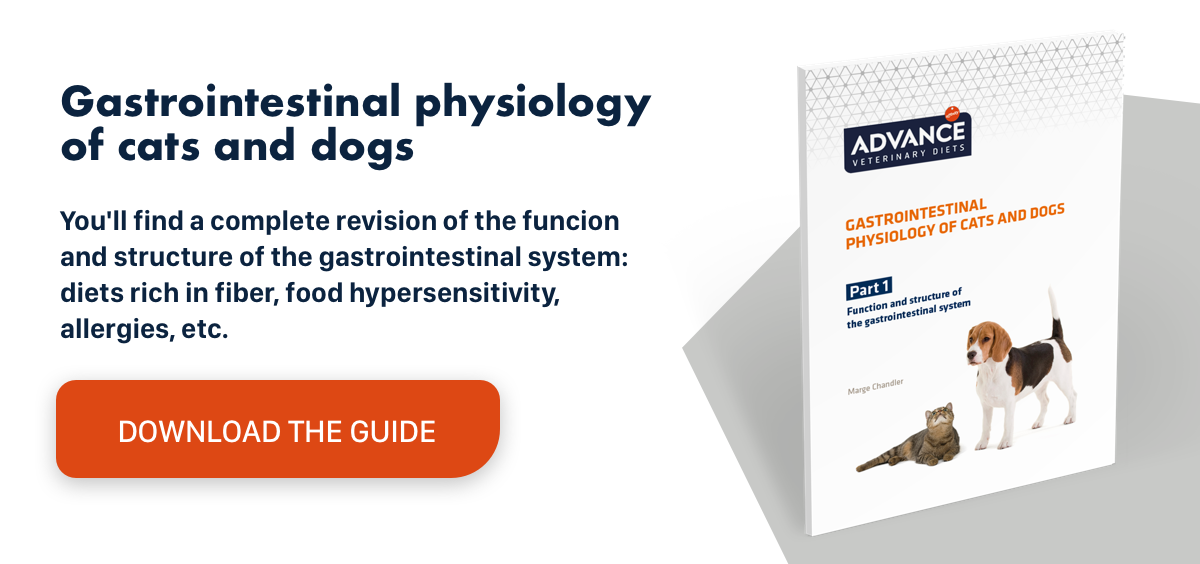3-in-1 vaccine for cats: what diseases does it protect against?
The 3-in-1 vaccine is fundamental for cats. It protects them against certain infectious diseases, some of which have a high risk of mortality and are incurable, so only symptomatic and supportive treatment is available.
The 3-in-1 vaccine for cats protects against three infectious diseases:
- Feline viral rhinotracheitis
- Feline calicivirus
- Feline panleukopaenia virus
Feline viral rhinotracheitis
This is an infectious respiratory tract disease that mainly affects the nose and trachea of cats. It is also known as feline influenza. It is usually characterised by the presence of fever, weakness, sneezing, conjunctivitis and nasal discharge. However, it can also cause a variety of skin and eye disorders. It may produce complications such as sinusitis, corneal ulcers, chronic ocular secretion and even abortions in pregnant cats.
All cats are susceptible to infection, but viral rhinotracheitis seems to be particularly severe in younger cats. It is most commonly observed in kittens between 6 and 12 weeks old.
Infection is caused by the feline herpes virus (FHV), which belongs to the herpesviridae family. This virus is responsible for most diseases of the respiratory tract in cats. It is very contagious and most cats are exposed to it during the course of their lives. Viral rhinotracheitis is the foremost cause of respiratory disease in cats, followed by feline calicivirus infection.
Transmission is through direct contact between animals. The virus multiplies in the nose and pharynx and can be found in nasal, pharyngeal and ocular secretions, as well as in saliva. It has an incubation period of 2 to 5 days.
If an infected cat recovers from the infection, the virus remains latent in the patient’s body. It can be reactivated in times of stress or by the onset of concurrent diseases and therefore the clinical signs will return. During these recurrences, infected cats shed the virus through their eyes and nose (in oral secretions), increasing the risk of infecting other cats.
While some antiviral drugs can be given to cats infected with FHV, none of the drugs currently available eliminate the virus from the body.

Feline calicivirus
Feline calicivirus (FCV) is a virus from the Caliciviridae family that causes major diseases of the upper respiratory and oral tract in cats. It manifests in the form of sneezing, ocular secretion and nasal discharge. It tends to cause a milder infection than FHV. Even so, FCV can cause ulcers on the tongue and may be complicated by pneumonia.
It is transmitted through direct contact between cats via nasal secretions, weeping eyes and saliva. Indirect infection can also take place from the environment or through contaminated matter. For example, FCV can remain active outside its host for up to 1 month in food bowls that have been contaminated by saliva.
Infected cats shed the virus over a 2–3 week period through oral, ocular and nasal secretions. Some may become chronic carriers, that is, they show no signs of disease, but expel the virus through their secretions, acting as a source of infection.
Cats of any age are susceptible to FCV infection. However, cats living in shelters and refuges have an increased risk of contracting it.
Feline panleukopaenia virus
Feline panleukopaenia is a highly contagious and potentially fatal disease. The illness is caused by a parvovirus.
Infected cats become lethargic, lose their appetite and experience fever, vomiting and severe diarrhoea. The word panleukopaenia means “a decrease in white blood cells”, which is notable in an infected cats’ blood test results.
The disease is fatal in young cats. If a cat becomes infected during pregnancy, it can give birth to cats with a condition called cerebellar hypoplasia, a neurological disorder that causes a severe lack of coordination.
The virus is mainly transmitted through contact with faeces, it is very resistant in the environment and can also be transmitted through food and water bowls, litter trays and so on.
Treatment consists mainly of supportive care, hospitalisation, fluid therapy, antibiotics and nutritional support. Strict measures may mean that some cats survive the infection, but most young cats succumb to the virus.
